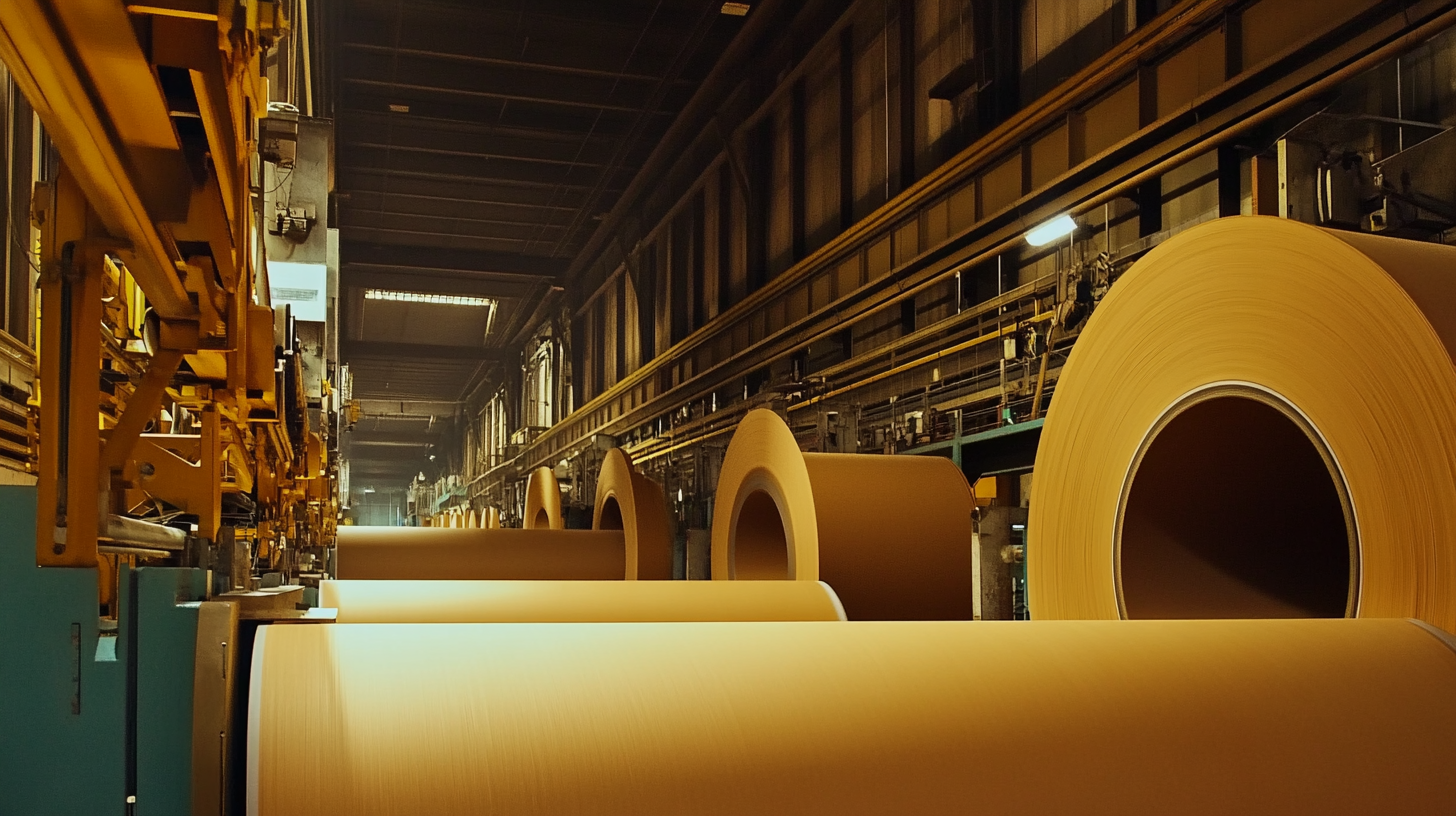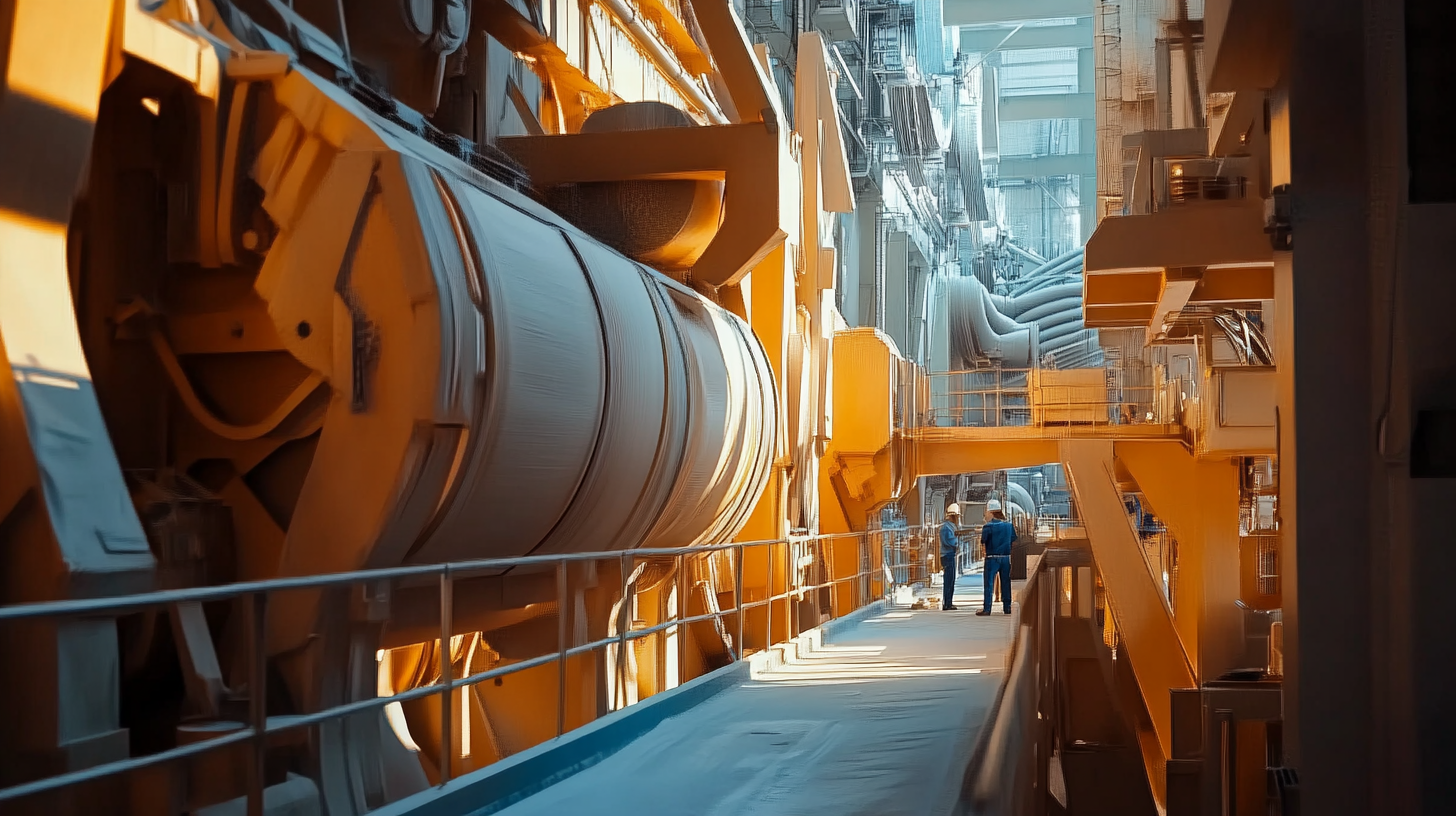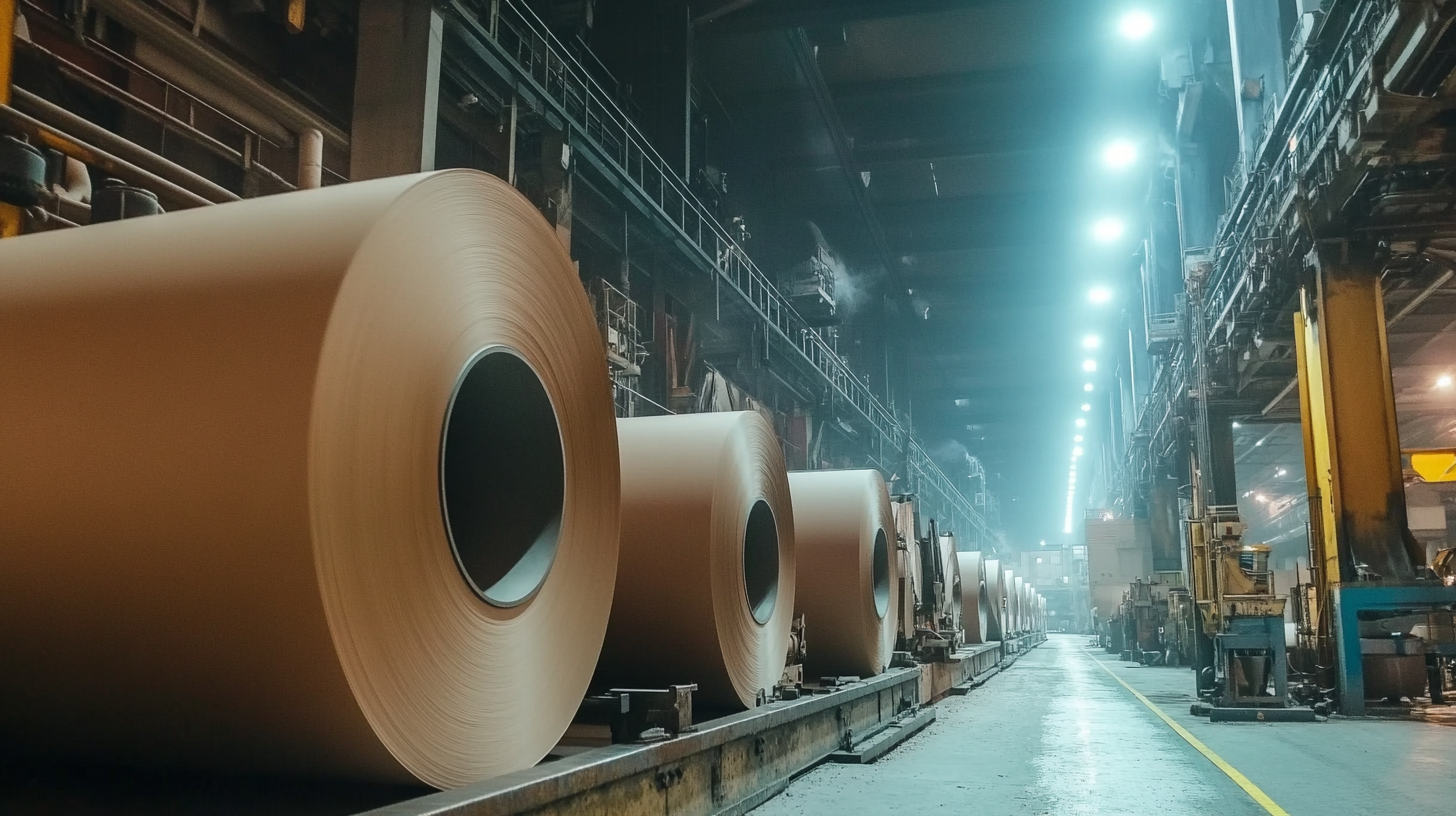
The Ultimate Guide to the Future of Kraft Paper Machine Technology in 2025
 As we look towards 2025, the landscape of Kraft Paper Machine technology is poised for transformative advancements that promise to redefine the manufacturing sector. This ultimate guide delves into the innovations and trends shaping the future of Kraft Paper Machines, emphasizing the excellence that stems from Chinese manufacturing prowess and its commitment to serving global markets. With a focus on sustainability, efficiency, and automation, the evolution of Kraft Paper Machines stands at the forefront of the paper manufacturing industry, responding to the growing demand for eco-friendly packaging solutions. This blog aims to provide insights into the cutting-edge technologies that will drive productivity, enhance product quality, and ultimately, contribute to a greener planet. Join us as we explore the future of Kraft Paper Machine technology, where excellence meets global service.
As we look towards 2025, the landscape of Kraft Paper Machine technology is poised for transformative advancements that promise to redefine the manufacturing sector. This ultimate guide delves into the innovations and trends shaping the future of Kraft Paper Machines, emphasizing the excellence that stems from Chinese manufacturing prowess and its commitment to serving global markets. With a focus on sustainability, efficiency, and automation, the evolution of Kraft Paper Machines stands at the forefront of the paper manufacturing industry, responding to the growing demand for eco-friendly packaging solutions. This blog aims to provide insights into the cutting-edge technologies that will drive productivity, enhance product quality, and ultimately, contribute to a greener planet. Join us as we explore the future of Kraft Paper Machine technology, where excellence meets global service.
Current Trends in Kraft Paper Machine Technology and Their Impact on 2025
The kraft paper machine technology landscape is evolving rapidly, influenced by a blend of consumer demands and environmental consciousness. In 2025, we can expect significant advancements in this sector, particularly as industries seek sustainable alternatives. The rise of eco-friendly options, such as paper products that replace traditional plastic wraps, illustrates a shift towards more sustainable manufacturing practices. Companies are increasingly adopting kraft paper solutions that not only reduce emissions but also enhance the overall efficiency of their operations.
Current trends indicate a growing demand for machine-glazed kraft paper, particularly in the food and retail sectors, which are expected to drive market size expansion. Innovations such as the blending of cellulose nanofibers with cotton linter pulp are improving the mechanical and barrier properties of kraft paper, positioning it as a versatile choice for various applications. As the utilization of AI and data analytics in manufacturing enhances production processes, the kraft paper industry is poised to witness transformation not only in product offerings but also in operational efficiencies, shaping a greener future by 2025.
Innovations in Energy Efficiency for Kraft Paper Production Machines
 As we move closer to 2025, the kraft paper industry is on the brink of a technological revolution, specifically in energy efficiency for production machines. Innovations in this area are crucial, given the industry's push towards sustainability and cost-effectiveness. One prominent trend is the integration of advanced automation systems that optimize energy use during production. These intelligent systems can continuously monitor and adjust energy consumption based on real-time data, significantly reducing waste and improving operational efficiency.
As we move closer to 2025, the kraft paper industry is on the brink of a technological revolution, specifically in energy efficiency for production machines. Innovations in this area are crucial, given the industry's push towards sustainability and cost-effectiveness. One prominent trend is the integration of advanced automation systems that optimize energy use during production. These intelligent systems can continuously monitor and adjust energy consumption based on real-time data, significantly reducing waste and improving operational efficiency.
Another exciting development is the use of renewable energy sources in kraft paper production. Many manufacturers are now investing in hybrid systems that incorporate solar and wind energy into their operations. This shift not only lowers carbon footprints but also stabilizes energy costs, allowing businesses to thrive in an increasingly competitive market. Furthermore, innovative technologies in heat recovery are allowing mills to repurpose excess heat generated during the production process, further enhancing energy efficiency and productivity.
The future of kraft paper machine technology promises substantial advancements in energy efficiency, aligning with global trends in sustainability. By adopting these innovations, companies can ensure a more environmentally friendly production process while also benefitting from reduced operational costs, paving the way for a more sustainable and profitable future in kraft paper manufacturing.
Automation and Smart Technologies: The Future of Kraft Paper Manufacturing
 As the kraft paper manufacturing industry gears up for 2025, automation and smart technologies are set to revolutionize production processes. According to a recent report by Smithers Pira, the global market for smart manufacturing technologies is expected to reach $500 billion by 2025, with kraft paper manufacturers increasingly integrating IoT (Internet of Things) devices to enhance real-time monitoring and operational efficiency. This shift not only streamlines production but also minimizes waste, as smart systems can adjust settings dynamically based on material performance and environmental factors.
As the kraft paper manufacturing industry gears up for 2025, automation and smart technologies are set to revolutionize production processes. According to a recent report by Smithers Pira, the global market for smart manufacturing technologies is expected to reach $500 billion by 2025, with kraft paper manufacturers increasingly integrating IoT (Internet of Things) devices to enhance real-time monitoring and operational efficiency. This shift not only streamlines production but also minimizes waste, as smart systems can adjust settings dynamically based on material performance and environmental factors.
Tips: Embrace predictive maintenance through automated monitoring systems. By leveraging data analytics, manufacturers can anticipate machinery failures before they occur, reducing downtime and maintenance costs. Implementing such strategies can improve overall equipment effectiveness (OEE) by up to 20%, a significant boost in a competitive market.
Furthermore, the adoption of AI-powered quality control systems is becoming essential, allowing manufacturers to ensure product consistency and quality at unprecedented rates. A study by McKinsey indicates that companies incorporating AI in their production processes could see productivity gains of up to 30%. Investing in these smart technologies is not merely a trend but a strategic imperative for businesses looking to thrive in the evolving kraft paper landscape.
Tips: Start small by integrating AI in one aspect of production before scaling up. This iterative approach allows for smoother transitions and better employee adaptation to new technologies.
Sustainable Practices in Kraft Paper Machine Development
The pulp and paper industry is experiencing a transformative phase as sustainability takes center stage in the development of Kraft paper machines. According to a report by Smithers, the global demand for sustainable packaging is expected to reach USD 400 billion by 2025, propelling manufacturers to adopt eco-friendly practices. In this context, Kraft paper production plays a pivotal role, as it is increasingly recognized for its biodegradability and recyclability, attributes that align with global sustainability goals.
Innovations in technology are driving these sustainable practices, with advancements such as closed-loop water systems and energy-efficient drying processes becoming standard in many facilities. Research from the International Energy Agency indicates that upgrading paper machines to incorporate these technologies can reduce water consumption by up to 40% and energy usage by 30%. As manufacturers invest in these upgrades, they not only adhere to stricter environmental regulations but also enhance their competitive edge in an evolving marketplace that prioritizes sustainability.
Moreover, the adoption of alternative raw materials, such as agricultural waste and recycled fibers, is gaining traction. A study by the Forest Products Association reveals that integrating 30% recycled content in Kraft paper production can significantly lower the carbon footprint while maintaining product quality. This shift not only supports recycling initiatives but also mitigates the reliance on virgin pulp, fostering a more sustainable paper industry by 2025.
Predictions for Market Demand and Growth in Kraft Paper Machinery by 2025
As we look ahead to 2025, the kraft paper machinery market is poised for significant growth, driven by an increasing global demand for sustainable packaging solutions. The global pulp and paper market, valued at approximately $340.1 billion in 2024, is projected to expand to $343 billion in 2025, and further reach $391.39 billion by 2032. This growth trajectory highlights a burgeoning need for advanced kraft paper machinery that can meet the evolving requirements of various industries, including e-commerce, food packaging, and consumer goods.
The rise in environmental awareness among consumers and companies is catalyzing demand for kraft paper products, which are often regarded as eco-friendly alternatives to plastic. Major shifts in market dynamics are expected to prompt manufacturers to invest in innovative technologies that enhance production efficiency and reduce waste. Moreover, advancements in automation and digitalization within kraft paper machinery are likely to play a crucial role in optimizing operational processes and meeting the high-volume production demands anticipated in the coming years. With these developments, the kraft paper machinery sector is set to thrive by 2025 and beyond.